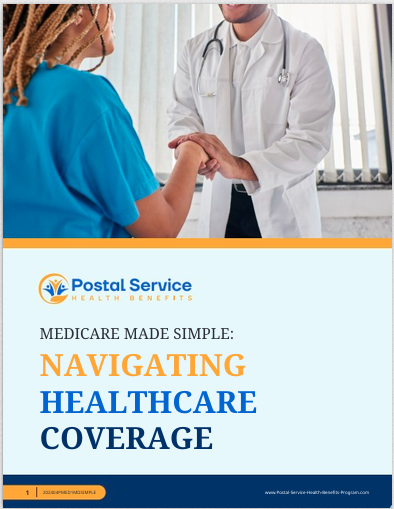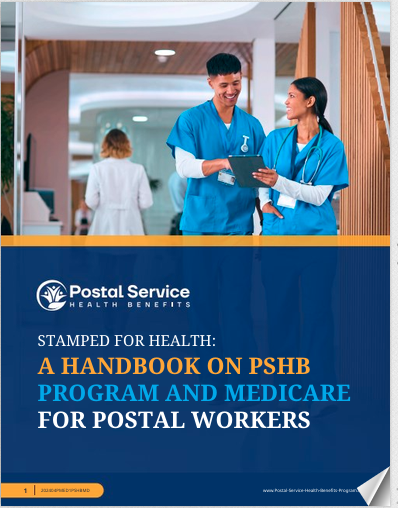Key Takeaways
- Postal workers’ health coverage is provided through the Federal Employees Health Benefits (FEHB) program, offering various options tailored to their needs.
- Understanding how your health benefits change during retirement is essential for financial planning and ongoing health care access.
Postal Workers: What You Need to Know About Your Health Coverage Right Now
As a postal worker, your health coverage is a crucial part of your overall benefits package. With numerous plan options, understanding how these plans work, what they cover, and how they evolve over time can help you make informed decisions. Whether you’re approaching retirement or actively employed, staying on top of your health coverage is vital to maintaining financial and physical well-being.
The Basics of Postal Workers’ Health Coverage
Postal workers receive their health coverage through the Federal Employees Health Benefits (FEHB) program. This program provides health insurance options for federal employees, including postal workers, and offers several plans to meet diverse health care needs. With more than 250 plan options, FEHB is one of the largest employer-sponsored group health insurance programs in the world.
Postal workers can select from different types of health plans, such as:
- Fee-for-Service (FFS) Plans: These plans allow you to choose your healthcare provider and typically include higher out-of-pocket costs.
- Health Maintenance Organization (HMO) Plans: These plans require you to use a network of providers and offer lower out-of-pocket costs.
- Consumer-Driven and High-Deductible Health Plans (CDHPs and HDHPs): These plans come with high deductibles but offer health savings accounts (HSAs) or health reimbursement arrangements (HRAs) for more flexible spending.
Health Coverage During Employment
While employed, postal workers have a variety of plan options through FEHB. Your premiums are subsidized by the federal government, covering a significant portion of the costs. However, your share of the premium will depend on the specific plan you choose and the level of coverage you require.
-
Family Coverage vs. Self-Only Coverage: Postal workers can choose between self-only coverage, self-plus-one (covering you and one eligible family member), or family coverage. Depending on your needs, selecting the appropriate coverage level can save you money while ensuring that your dependents have access to the healthcare they need.
-
Open Season for Enrollment: Postal workers can adjust their health coverage annually during the federal benefits open season. This is a critical time to evaluate whether your current plan is meeting your health needs and whether another option may offer better benefits or lower costs.
Health Benefits for Retired Postal Workers
One of the key advantages of the FEHB program is that health benefits often continue after retirement. However, it is essential to understand how your benefits will change once you leave active employment.
-
Eligibility for Retiree Coverage: To keep your health coverage into retirement, you must be enrolled in FEHB for at least five consecutive years before retiring. Meeting this requirement ensures you can continue to access the same broad range of health plans available during your employment.
-
Coordination with Medicare: Once you turn 65, your FEHB coverage will coordinate with Medicare. While Medicare becomes your primary insurer, FEHB serves as secondary coverage, helping to reduce out-of-pocket costs for medical services not fully covered by Medicare. Many retirees choose to enroll in both Medicare Part A (hospital insurance) and Part B (medical insurance) to maximize their health coverage.
-
How Premiums Work in Retirement: Retired postal workers continue to pay FEHB premiums, but unlike during employment, there is no federal subsidy. Understanding how your premiums will change in retirement can help you plan for future healthcare expenses. Additionally, the premiums are typically deducted directly from your pension or annuity, so you’ll want to budget accordingly.
Changes Coming to Postal Workers’ Health Plans
The Postal Service Reform Act of 2022 introduced several changes that postal workers need to be aware of regarding their health coverage. A significant update is the creation of the Postal Service Health Benefits (PSHB) Program, which will operate as a part of FEHB starting in 2025.
What Does the PSHB Mean for You?
The PSHB program is designed specifically for postal workers and retirees, and all postal employees and retirees will be required to enroll in a PSHB plan by 2025. This transition means several changes to how your health benefits will be managed:
-
Mandatory Medicare Enrollment for Retirees: Under the new PSHB program, postal retirees who are eligible for Medicare will be required to enroll in Medicare Part A and Part B. This change aims to reduce the overall costs of healthcare for postal retirees while maintaining comprehensive coverage through the combination of Medicare and PSHB.
-
New Enrollment Process: Current postal workers and retirees will need to select a PSHB plan during a special enrollment period. This special enrollment period will take place before the PSHB program goes into effect, and it is essential to review your options carefully during this time.
-
Impact on Health Coverage: While the PSHB program is designed to provide similar benefits to those currently available through FEHB, there will be some differences in plan offerings and costs. Retirees will especially want to pay attention to how their health benefits will coordinate with Medicare under the new system.
Tips for Navigating Your Health Coverage
Choosing the right health plan as a postal worker or retiree can be overwhelming, but a few key strategies can make the process easier:
1. Evaluate Your Health Needs Regularly
Your health needs may change from year to year, especially as you approach retirement or experience life changes like a growing family. Be sure to assess your current and future health requirements when selecting a plan. This may include considerations such as chronic conditions, prescription drug coverage, and whether you need access to specialized care.
2. Use Open Season to Your Advantage
During the annual FEHB open season, take the opportunity to review your plan options. Health plans can change their benefits or costs from year to year, and a plan that worked for you last year might not be the best fit moving forward. Carefully review your plan’s benefits, premiums, and any changes that may impact your coverage.
3. Plan for Retirement Health Costs
Health coverage is one of the most important factors to consider as you plan for retirement. If you are nearing retirement age, ensure that you understand how your FEHB benefits will transition into the PSHB program and how they will coordinate with Medicare. Proper planning can help you avoid unexpected healthcare expenses and maintain the coverage you need in retirement.
4. Stay Informed About Changes to Postal Health Benefits
As the PSHB program approaches, it is crucial to stay updated on how these changes will affect your health coverage. Attend informational sessions, read up on the new program, and consult with licensed insurance agents to ensure you make the right decisions for your healthcare needs.
Common Questions About Postal Workers’ Health Coverage
How Do I Choose the Right Plan for My Family?
Choosing the right health plan depends on your family’s specific health needs, preferences, and budget. If you or a family member regularly sees specialists or takes prescription medications, you may want a plan with more comprehensive coverage, even if it has higher premiums. On the other hand, if your family is generally healthy, a plan with lower premiums and higher out-of-pocket costs may be a better financial fit.
What Happens If I Miss the Open Enrollment Period?
Missing the open enrollment period could leave you without the ability to make changes to your health coverage until the next year. However, certain life events, such as marriage, childbirth, or retirement, may qualify you for a special enrollment period. Be sure to keep track of open season dates and plan ahead to avoid missing this critical window.
Health Coverage Tailored to Postal Workers’ Needs
Postal workers have access to extensive health benefits through the FEHB and upcoming PSHB programs, but understanding how to navigate these plans can significantly affect your healthcare experience. Whether you’re actively employed or nearing retirement, staying informed about your coverage options and upcoming changes can help ensure you’re well-prepared for the future.
Contact Information:
Email: [email protected]
Phone: 9045552345







